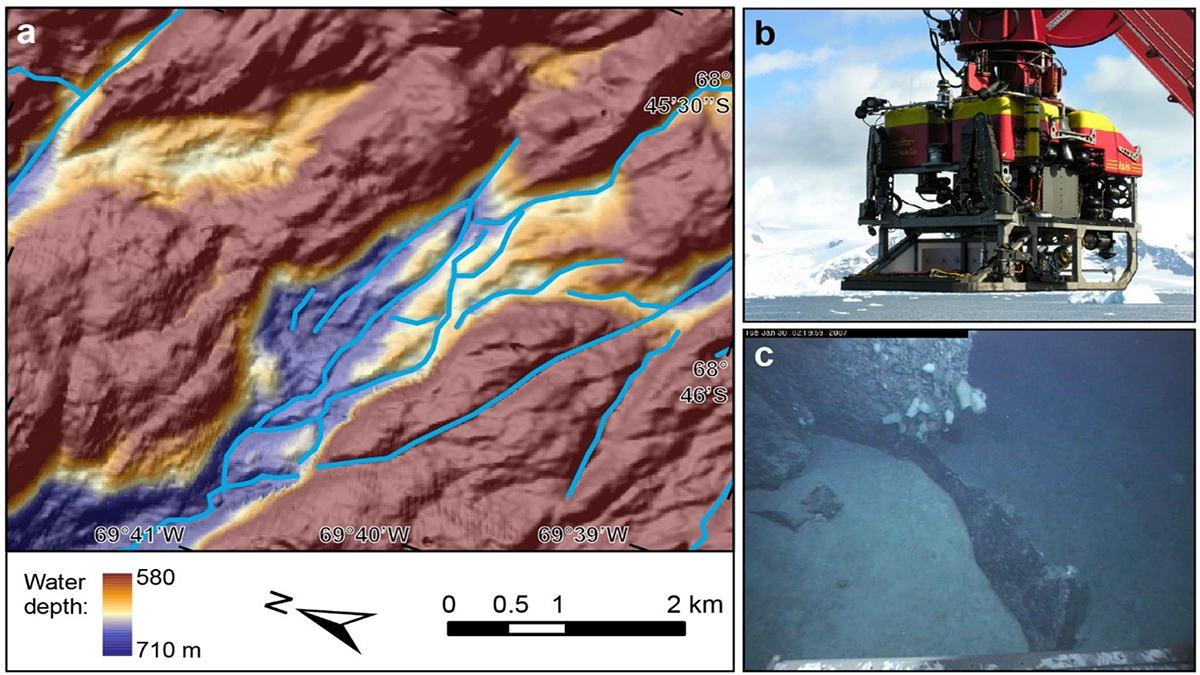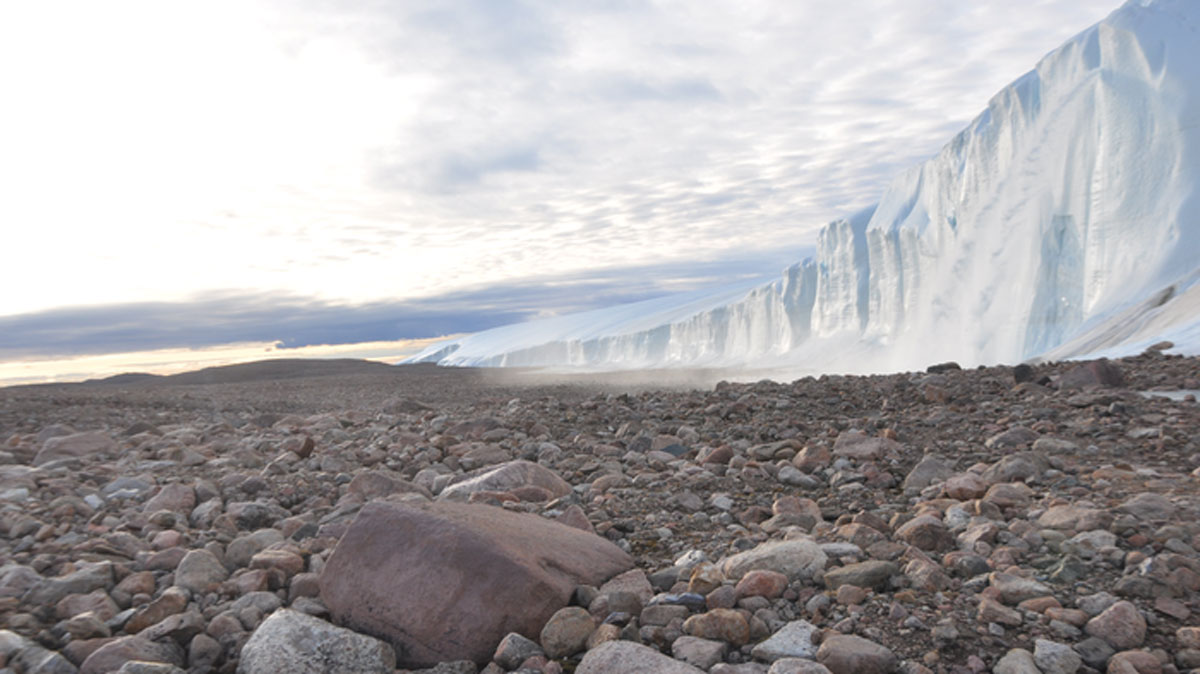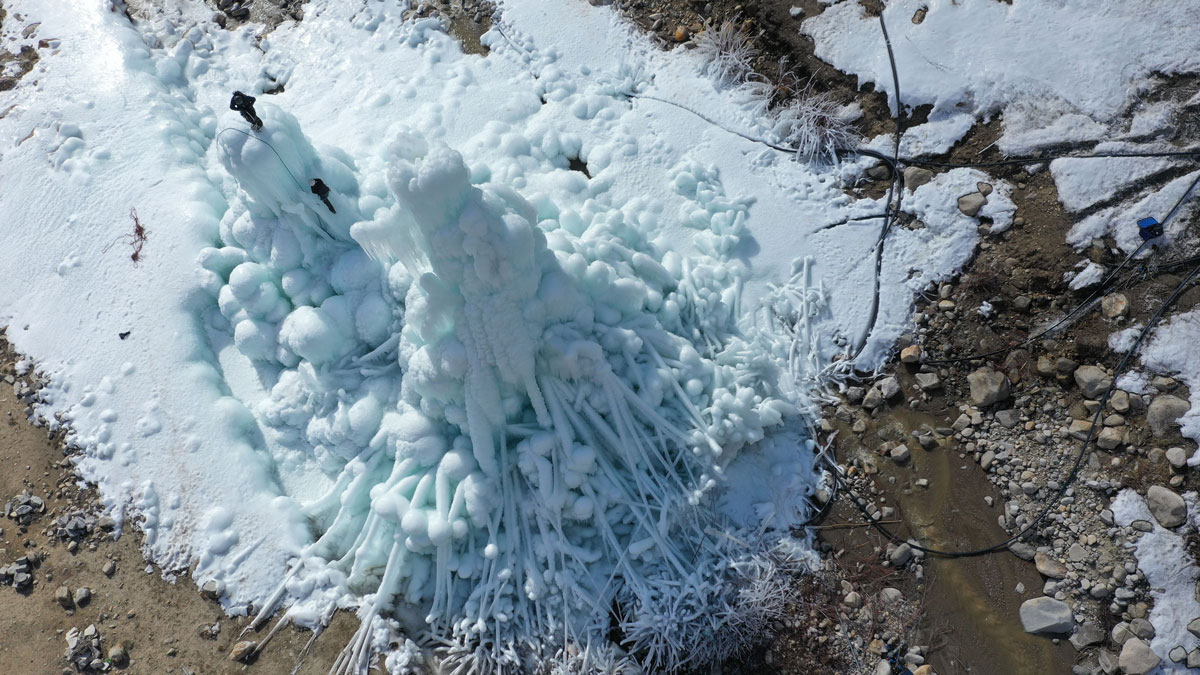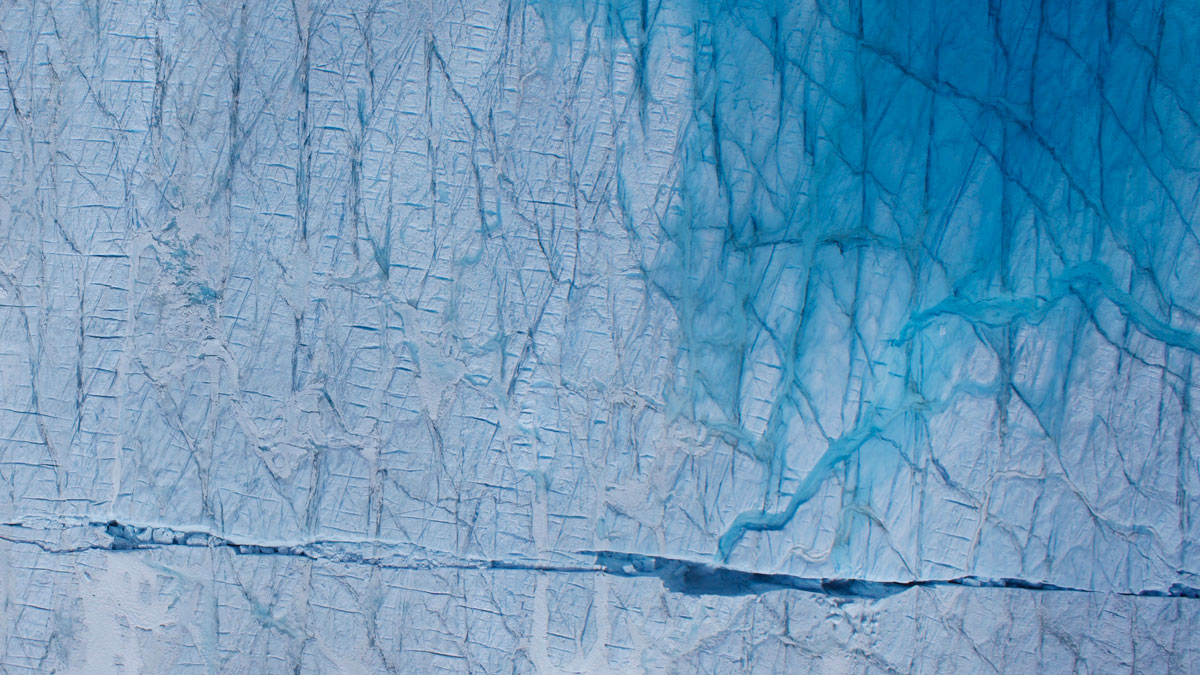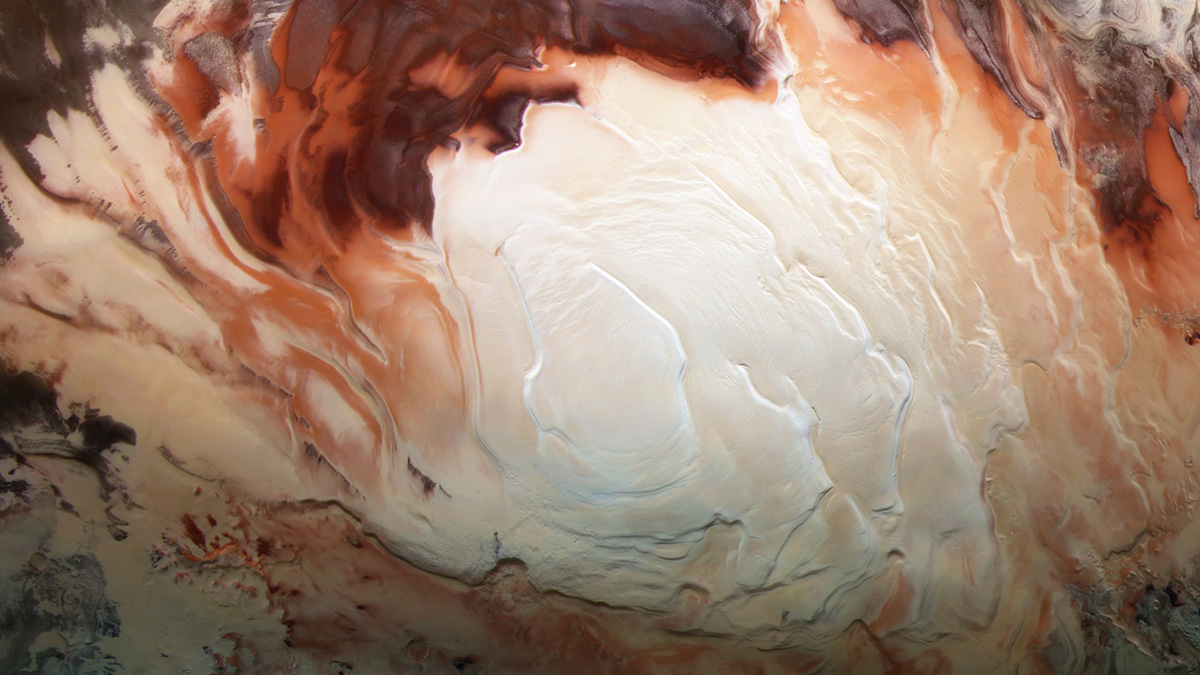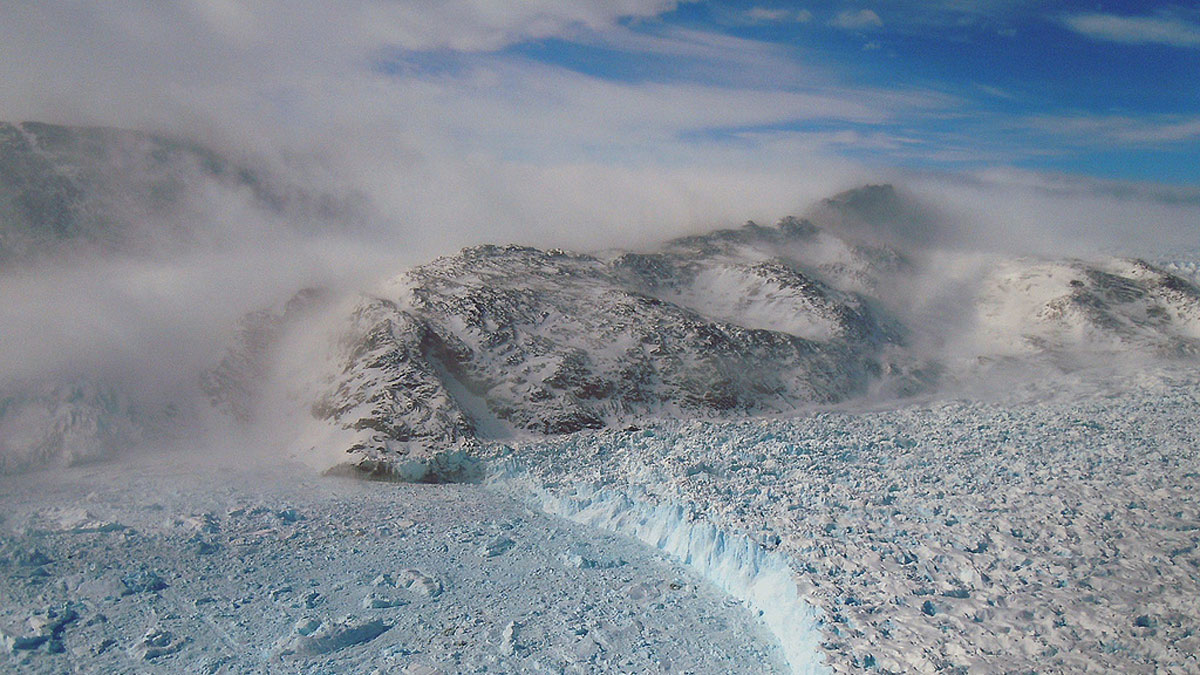A particular kind of storm coincided with 13 of the 21 recent calving events in Antarctica.
glaciers & ice sheets
New Observations Reveal Ancient Subglacial Water Paths
Analyses of new shipboard and ROV observations of bedrock channels carved by floods and outbursts from subglacial lakes under Antarctica shed light on complex subglacial processes.
Impact Structure Hidden Under Arctic Ice Dates to the Paleocene
Greenland’s Hiawatha impact structure, more than 30 kilometers in diameter, is much older than previously thought, new results suggest.
Ice Towers May Hold Promise—and Water—for Some Cold, Dry Places
A new study that cues into the formation of ice cones for storing glacial meltwater reveals how the structures can be built more efficiently and which climatic conditions work best.
It’s Getting Hot Under Greenland
Meltwater draining through an area of the Greenland Ice Sheet creates enough energy to rival that of a massive hydroelectric power station, researchers say.
The Bumpy Search for Liquid Water at the South Pole of Mars
Studies since 2018 have provided competing explanations of bright radar reflections from the base of the south polar ice cap.
Himalayas Are Experiencing an “Exceptional” Loss of Glacial Mass
The Himalayas have lost 40% of their glacial mass since the Little Ice Age. East Nepal and Bhutan have experienced the most rapid losses.
The Uncertain Future of Antarctica’s Melting Ice
A new multidisciplinary, international research program aims to tackle one of the grand challenges in climate science: resolving the Antarctic Ice Sheet’s contribution to future sea level rise.
“Sticky” Ice Sheets May Have Led to More Intense Glacial Cycles
New research attributes a shift to longer, stronger glacial cycles to increased friction between ice sheets and bedrock in the Northern Hemisphere 1 million years ago.
Sensing Iceland’s Most Active Volcano with a “Buried Hair”
Distributed acoustic sensing offered researchers a means to measure ground deformation from atop ice-clad Grímsvötn volcano with unprecedented spatial and temporal resolutions.


